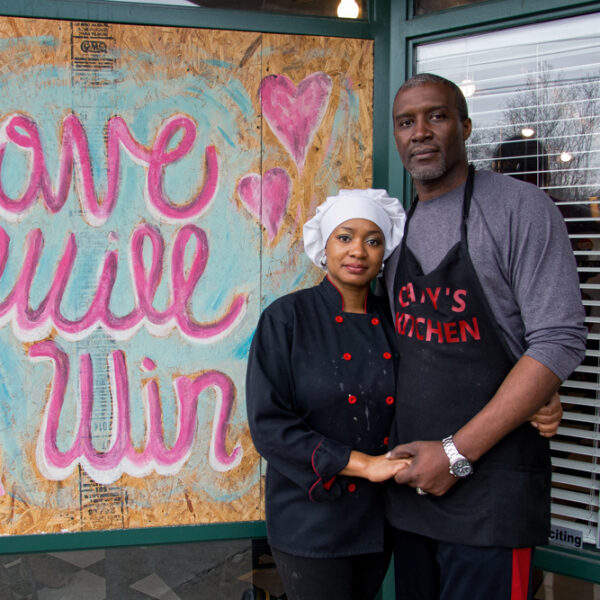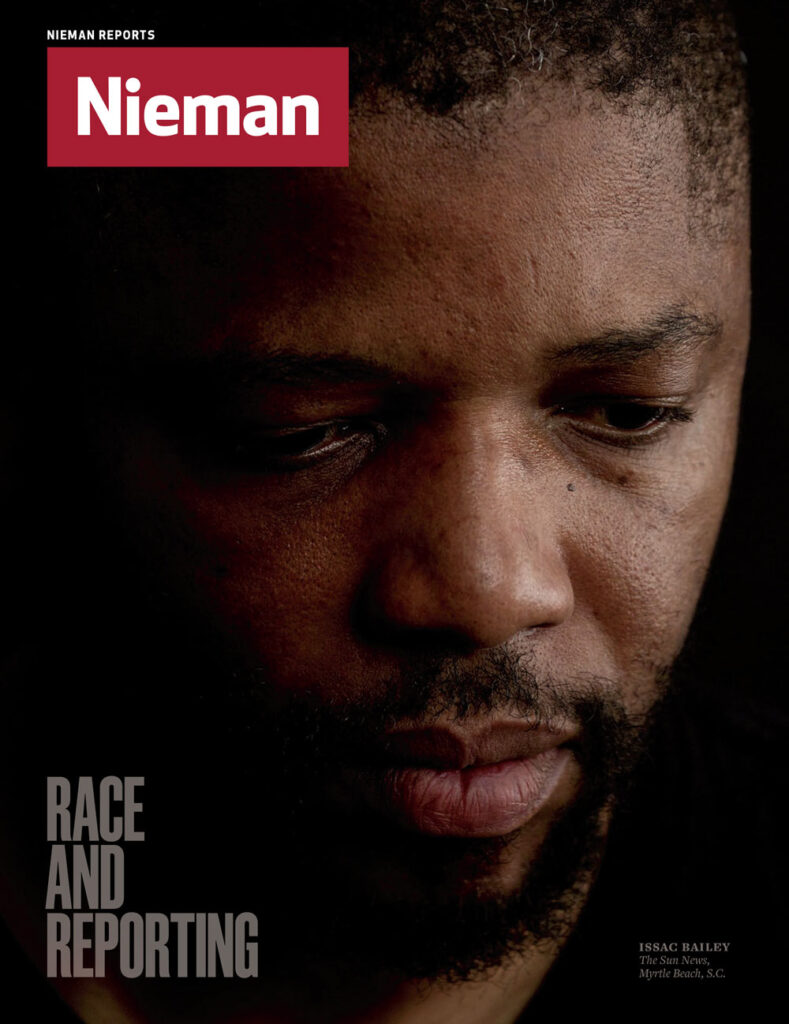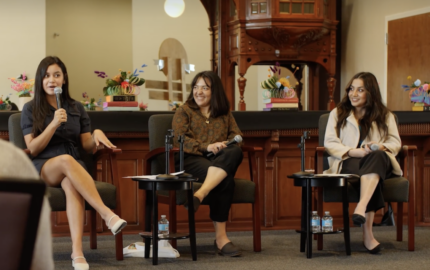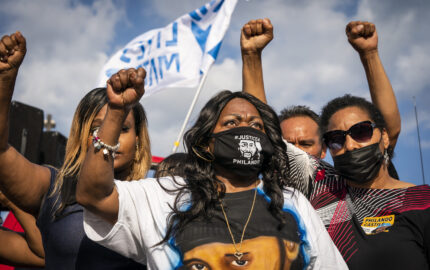After unarmed black teenager Michael Brown was shot and killed by a white police officer last summer in Ferguson, Missouri, a photo of Brown appearing to throw gang signs began circulating online. In response, hundreds of black people began tweeting using the hashtag #IfTheyGunnedMeDown—some posting dual images of themselves, one playing on stereotypes, the other capturing more positive depictions—underscoring the message: Which photo would the media use if I were gunned down? The social media campaign turned a critique of the mainstream media’s portrayal of African-Americans into a viral lesson about racial stereotypes. As the editor and publisher of a news organization that focuses on race, I’m painfully aware that black life is too often cast in one dimension, as the photos tweeted under the #IfTheyGunnedMeDown hashtag illustrated. Black people are soldiers and fathers, doctors and lawyers, police officers and teachers, and even a president and first lady. I’m stating the obvious, but the truth isn’t obvious in the news. Whether by omission or commission, news coverage frequently reinforces stereotypes. A beat that covers African-Americans could help capture the breadth of black life while also shining a steady light on the persistent challenges facing black people at a time when race in America is more complex than ever before.
In Pittsburgh between March 1 and April 30, 2011, 73 percent of broadcast stories featuring black men were about sports or crime, according to the Pew Research Center’s Project for Excellence in Journalism, which reviewed nearly 5,000 print and broadcast stories. Other studies about news coverage of black men echo the findings. Research shows that stories in which African-Americans are consistently associated with poverty and crime increase racial animosity toward them, reinforcing the color lines in our society.
Every journalist should share responsibility for coverage of race. That’s part of journalistic excellence, the goal of all news outlets. But we also need reporters focused exclusively on the issue. If we are honest with ourselves, we know that race won’t get covered regularly if newsroom leaders don’t demand it, don’t support it, and don’t reward it. And truth is, most of them don’t.
Changing the portrayal of African-Americans in the media can’t be accomplished through occasional big projects about race; it requires a sophisticated and sustained effort over time. That’s what a beat can do.
More than 50 years after some mainstream news organizations began hiring black reporters, a beat that focuses on black people may appear to be the equivalent of a “Colored Only” sign. It’s a return to the “Negro pages,” the section set aside in newspapers for coverage of black people into the 20th century, says Leon Dash, a founding member of the National Association of Black Journalists who is now a professor at the University of Illinois at Urbana-Champaign. “We should fight to be included in the news pages and on the websites of any credible journalism enterprise,” he argues.
Changing the portrayal of African-Americans in the media requires a sophisticated and sustained effort
Charles Whitaker, a professor at Northwestern University’s journalism school and a generation younger than Dash, is more ambivalent. A beat “could be an antidote” to the limited coverage of race, he says. “What it does is pour time, resources, energy, and voices into the reporting. If somebody is really dedicating resources, we can change the conversation. Now, we get the pathology stories, and we don’t get as many success stories and research stories.”
But, Whitaker, who worked for major metropolitan dailies and Ebony magazine before joining academia, cautions, it could also become an excuse for news organizations to “ghettoize” coverage.
A beat seems like a “great idea in theory,” says Shani O. Hilton, executive editor for news at BuzzFeed. Race isn’t making its way into mainstream coverage and into wider stories about issues such as poverty, she argues, but the solution is many beats, not one. “What’s the black story?,” she asks. “There are several. There’s an economic story, an education story. There’s a youth and young women and young men story.”
For Austin Long-Scott, a former national reporter for The Washington Post, racial politics have evolved considerably since the 1960s, making it now more important to cover power, how it works, who has it, and who doesn’t. Rather than a beat, he thinks journalists should cover “levers of power,” which include race and class. “Because of changes begun by the civil rights movement and continued by the changing attitudes of younger people, race [isn’t] as simple as it used to be,” he says. “What’s the commonality between upper class blacks and black folks being corralled by the prison system?”
To me, the complexity of black identity today—the diversity within the community, as Long-Scott and Hilton describe—is the selling point for a beat. Whitaker argues that mainstream news organizations can learn a lot from the black press, which covers African-Americans in a “holistic” way. The complexities of our communities play out in those publications. For example, a study by the Centers for Disease Control and Prevention published in 2013 indicated that black fathers were as involved with their children as other fathers. Yet I saw little coverage of this story, which counters prevailing myths about absent black fathers.
A diverse staff means newsrooms have people with very different lived experience, people who can bring perspectives that are missing to stories. Those worldviews play out along racial and other lines, including class, religion, gender, ethnicity, and sexual orientation.
I believe that’s invaluable. Direct experience with housing discrimination or police harassment can help deepen reporting, revealing new angles, and not just for stories about race. For example, the drop in public sector jobs over the past several years has disproportionately affected African-Americans, who historically have relied on government jobs to enter the middle class.
Diversity in newsrooms is about the quality of journalism. It’s from that point of view that we should be concerned about the data from the American Society of News Editors (ASNE). The percentage of minorities in newspaper newsrooms is virtually unchanged over the past decade. People of color are 13 percent of the 36,700 newspaper journalists, based on 2013 figures, the most recent available from ASNE and released in 2014. In 2013, the percentage of minorities in local TV news remains steady at 22 percent, where it was in 2003 according to a survey by the Radio Television Digital News Association. Minorities were about 13 percent of the local radio workforce in 2013, a slight increase from 2003. In 2013, minorities comprised about 37 percent of the United States population, according to U.S. Census Bureau data.
i’m not arguing that only black people can and should write stories about black people, or that they are uniquely qualified by virtue of life experience to write about race. Like any specialty beat, a reporter has to cultivate sources, identify experts, and learn the seminal literature.
Coverage involving race may have opened the door for a generation of African-American journalists, but many black journalists then—and now—had ambitions beyond reporting about race. And many young journalists of color today want to cover many topics, of which race may or may not be one. To consign them to a race beat would just be another form of stereotyping.
Race can be a coveted beat when newsroom leaders value it
White reporters can and should cover race. As the editor for a minority affairs beat at The Sacramento Bee in the early 1990s, I worked with a white male reporter who had had little experience writing about race. But he was a star in the newsroom, and selecting him to cover the beat immediately elevated its profile. White reporters understood that the beat was important, and because senior editors valued the reporter, coverage of race received more attention.
My job, as I saw it, was to work with him to elevate the quality of coverage, to make sure we got the history and context right. I often felt conflicted that it took a white reporter who had little experience covering race to give the beat the attention it deserved.
I learned two important lessons from that experience. As with any beat, you have to give the reporter support and time to learn his coverage area, and race can be a coveted beat when newsroom leaders value it and treat it as they would other specialty beats.
For Whitaker, the benefits of creating a beat may outweigh the drawbacks “if we’re going to do it right and give it time and attention and the spatial real estate as well.” So what does a black beat look like?
Looking at data is one place to start. At The Chicago Reporter, where I am editor and publisher, we use data to drive our investigations. There’s a treasure trove of information available through public agencies. The African American Policy Forum is one organization doing innovative work at the intersection of race and gender. The Forum recently released “Black Girls Matter,” in conjunction with Columbia Law School. The report drew on interviews and government data to show how school disciplinary policies affect black girls.
Combining data analysis with spending time in neighborhoods enriches reporting about race. Twitter, the vibrant space that brought us viral hashtags like #BlackLivesMatter, is a source of story ideas. So are local newspapers and the African-American press.
And Whitaker believes solutions-based journalism matters. “It’s important to look at how you can advance who is working at solutions and what is being done,” he says. “That’s the way I would like to see the beat done, in addition to uncovering injustices.”
Many major universities have African-American studies professors who research local and national issues, and there are programs that are pioneering solutions to issues. A study by the University of Chicago’s Crime Lab found that a year in the Becoming a Man program improved attendance and grades and reduced violent-crime arrests by 44 percent. The program inspired President Obama’s My Brother’s Keeper initiative, which tries to steer young men of color toward success.

Waldo E. Johnson, Jr., a professor at the School of Social Service Administration at the University of Chicago, says the beat should place the issues black people face in the context of institutional practices and structural inequality. “In the media, there is a huge focus on individual behavior,” says Johnson, who has conducted extensive research on black boys and men. “I see more of a nuanced discussion about structure than we’ve had before, but it’s not defined as institutional racism. Instead, we talk about disinvestment in communities. But we don’t say when the disinvestment occurred and who divested. We don’t name institutions.”
Whitaker says the beat has to capture the voices of the community: “I had an instructor who said journalists have an ‘edifice worship.’ You only get narrative and story by being among the people you are writing about, finding the time and space to hear the stories. My theater friends call it ‘original voice,’ letting people tell their own stories.”
There are already some commendable reporting efforts around race. We need more of them. The Race Card Project on NPR engages everyday Americans in conversations about race and racism through mining and sharing their personal experiences. At The New York Times, Tanzina Vega produced an impressive list of stories that tapped into the zeitgeist around race—from the significance of Black Twitter to the differences between today’s activists and their counterparts in the civil rights era. When she was reassigned in January, Times editors said race was too big for one beat, but have yet to publicly announce a plan.
Investigations like Nikole Hannah-Jones’s ProPublica story about school resegregation in the South and The Atlantic’s Ta-Nehisi Coates’s essay about reparations feed the public appetite for stories about race while simultaneously crafting smart, thoughtful, and challenging analyses about the legacy of structural racism today. Hannah-Jones explored how schools in Tuscaloosa, Alabama, once under federal desegregation orders, have re-segregated with the blessing of the school district. Coates tracks the long arm of racism that extended from the Jim Crow South to the perceived haven of Chicago. These stories prompted conversations and are changing the narrative around black people and an understanding of their history in this country.
Making coverage of African-Americans a high-profile position sends a message from managers to their newsrooms about what is valued and what will be rewarded. And outside of our newsrooms, the decision sends a message that is equally as powerful as #IfTheyGunnedMeDown. That is this: Black lives matter in news coverage.




